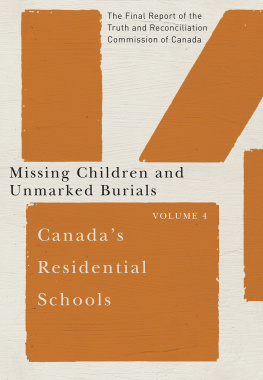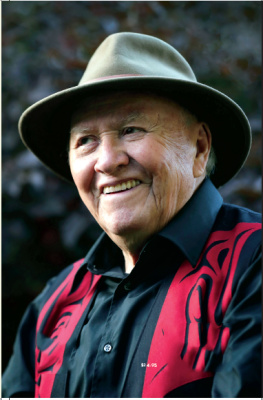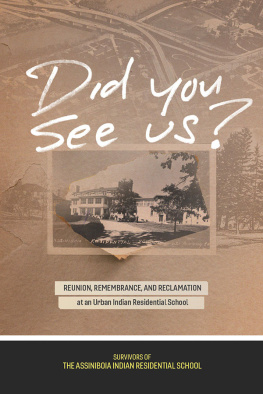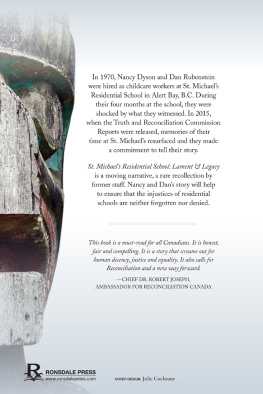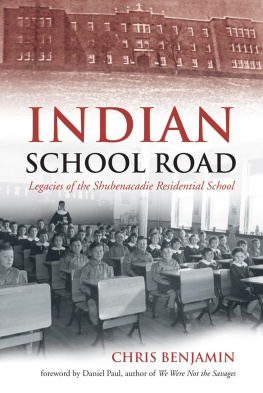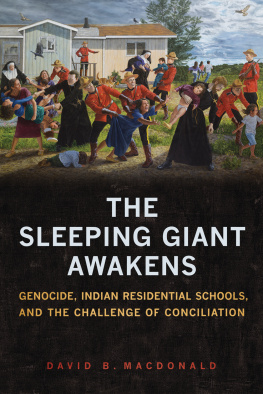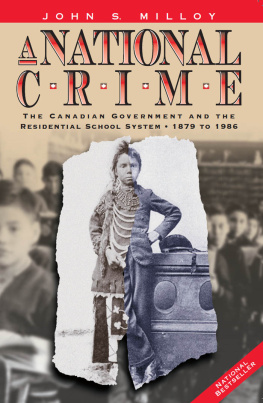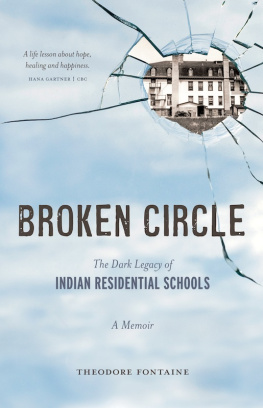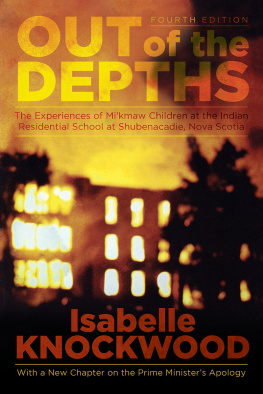VICTIMS OF BENEVOLENCE
VICTIMS OF BENEVOLENCE
THE DARK LEGACY OF THE WILLIAMS LAKE RESIDENTIAL SCHOOL
Elizabeth Furniss

VICTIMS OF BENEVOLENCE
Copyright 1992 and 1995 by the Cariboo Tribal Council
SECOND PRINTING: 2000
All rights reserved. No part of this book may be reproduced in any part by any means without the written permission of the publisher, except by a reviewer, who may use brief excerpts in a review.
ARSENAL PULP PRESS
#101-211 East Georgia St.
Vancouver, BC
Canada V6A 1Z6
arsenalpulp.com
The publisher gratefully acknowledges the support of the Canada Council for the Arts and the B.C. Arts Council for its publishing program, and the Department of Canadian Heritage through the Book Publishing Industry Development Program for its publishing activities.
An earlier version of this book was published by the Cariboo Tribal Council in 1992.
Printed and bound in Canada
CANADIAN CATALOGUING IN PUBLICATION DATA:
Furniss, Elizabeth, 1959
Victims of benevolence
Includes bibliographical references.
ISBN 1-55152-015-x.
ISBN 978-1-55152-015-5
EISBN 978-1-55152-337-8
1. Cariboo Tribal CouncilHistory. 2. Shuswap IndiansResidential schoolsHistory.* 3. Indians of North AmericaBritish ColumbiaWilliams LakeResidential schoolsHistory.* 4. Indians, Treatment of-British ColumbiaWilliams LakeHistory, 1. Title.
E96.6W54F87 1994 371-97979 c94-910729-8
The Indians, being nomadic by nature, wish to be free to come and go as they please. It is not surprising, therefore, that their children found the confinement and discipline of school life hard to bear, and that, consequently, several of them ran away. One of these, a young boy, was found dead in the woods. To pacify his parents and the other Indians was no easy task. It was difficult also to persuade the Indians to send their children to school and to keep them there all during the school term. This took a great deal of diplomacy on the part of the Principals and the Sisters. As for the missionary, he spent hours and hours on the various reservations trying to persuade the Indians to send their children to school and to return to the school those who had run away.
Father Francois Marie Thomas, O.M.I., Memoirs
Contents
CHAPTER ONE
A Sacred Duty
CHAPTER TWO
The Shuswap Response to Colonialism
CHAPTER THREE
The Early Years of the Mission School
CHAPTER FOUR
A Death and an Inquest
CHAPTER FIVE
The Government Investigation
CHAPTER SIX
Runaways and a Suicide
CHAPTER SEVEN
History in the Present
Preface
THIS PROJECT BEGAN IN 1990, when I was asked by the Cariboo Tribal Council of Williams Lake, British Columbia, to draw together some general information on the history of St. Josephs residential school, known locally as the Mission. I was approached to do this research because of my previous working relationship as an aboriginal rights co-ordinator with the Council, and because of my familiarity with the archival sources of information on the Shuswap and the early missionaries to the Cariboo. This study was one component of a broader research program undertaken by the Cariboo Tribal Council to assess the long term psychological and social impacts of the residential schools on their communities.
In my review of federal files which contain administrative records and correspondence of the Department of Indian and Northern Affairs, I found a wealth of documentsprimarily letters and inquest affidavitsdiscussing problems in the care being provided to students at the school during the early years of the schools operation. On the basis of these documents, I wrote a preliminary report for the Tribal Council chiefs, a report entitled A Conspiracy of Silence: The Care of Native Students at St. Josephs Residential School, Williams Lake, B.C. In 1992 I rewrote this study as a booklet for readers among the fifteen Shuswap, Carrier, and Chilcotin communities. The booklet was published by the Cariboo Tribal Council under the title Victims of Benevolence: Discipline and Death at the Williams Lake Indian Residential School, 1891-1920. Many people from the Shuswap, Chilcotin, and Carrier nations attended the Mission, and all have their own stories to tell about life at the school. Virtually none of the past students I have spoken with have been surprised at the events described here. A number have said that the events documented here are simply the tip of the iceberg.
The stories of the tragic deaths of two young boys at St. Josephs Mission, the subsequent government investigations, and the responses of the Oblates and government officials now are retold here for a broader, more general audience. I have expanded the text to provide more background information on government policy, the residential school system, and current discourse on the residential school issue. These stories have been retold here in the belief that they have much relevance to current discussions of the impact of the residential schools on First Nations in Canada. While the residential schools have now closed, the relationships that existed between First Nations, the church, and the government, relationships that are central to this story, still persist today.
This story has been reconstructed from information contained in archival documents. I have chosen to use archival sources not because I believe they are any more objective than oral traditions and personal accounts; on the contrary, it is now generally accepted, within contemporary anthropology, that written documents do not contain objective truths, In most cases, historical records have been written by non-Natives and thus reflect a non-Native cultural orientation. As a result, Native perspectives are often excluded from documentary sources of information, making it critical, especially when researching such contentious issues as the history and impact of the Indian residential school system, to consult Native people for information based on their first-hand experiences and oral traditions. The set of archival documents that I draw on here, however, is unusual in that Native voices have been very well documented in the form of affidavits and letters. From these documents Native voices emerge loudly and clearly, and they deserve to be honoured.
At the same time, it was not through these documents that I was first introduced to the residential school issue. For several years previous, in the course of working with the Cariboo Tribal Council and developing friendships with First Nations people, I had heard many stories of peoples experiences at the Mission. I was present in the area when the first Oblate from St. Josephs Mission was charged with sex-related crimes, and when the residential school topic emerged as a critical issue of discussion within the local Native communities. These experiences, plus my engagement with the scholarly literature on Native-white relations in the course of doctoral studies in anthropology at the University of British Columbia, have significantly shaped my understanding of the impact of the residential schools on First Nations people and communities.
I would like to thank the past and present Chiefs of the Cariboo Tribal CouncilWilliam Alphonse Jr., Antoine Archie, Bill Chelsea, Gabriel (Roy) Christopher, Rick Gilbert, Bev Sellars, Lenny Sellars, and Agnes Snowas well as Charlene Belleau, past social development co-ordinator with the Cariboo Tribal Council, and Bruce Mack, acting Tribal Council administrator, for giving me the opportunity to research and write this study. Thanks also go to Sharon Bob of the Cariboo Tribal Council for all her administrative work and her help with pulling together old photographs. Id also like to thank Julie Cruikshank, who provided critical feedback on an earlier draft, and Renee Richards and Michael Barnholden, who supported and promoted this book in its earlier version.
Next page

